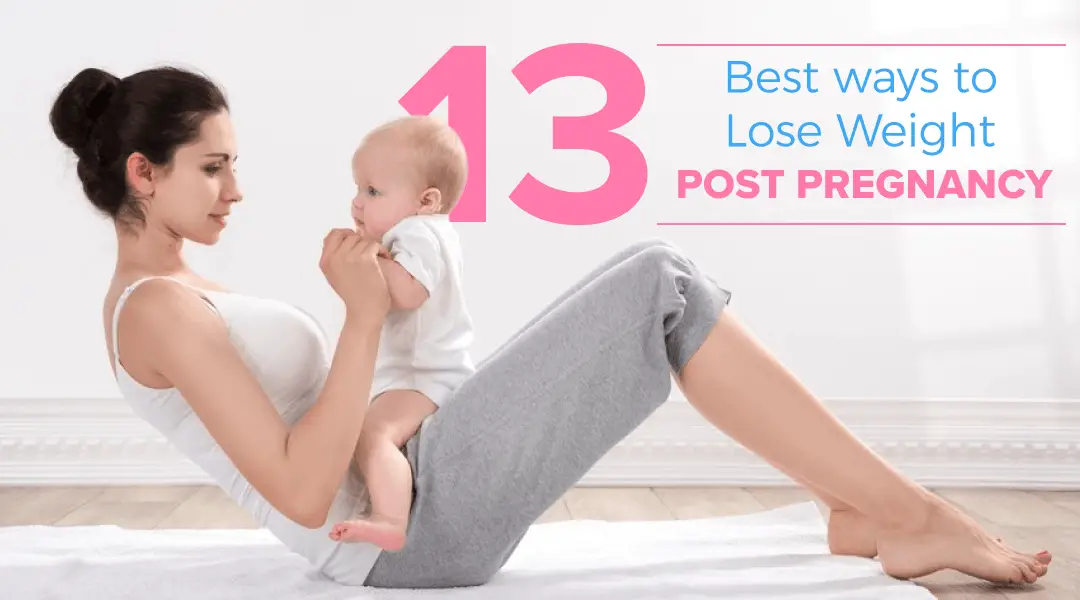How To Do Kegel Exercises For Pregnant Women
This article was medically reviewed by Troy A. Miles, MD. Dr. Miles is an Orthopedic Surgeon specializing in Adult Joint Reconstruction in California. He received his MD from the Albert Einstein College of Medicine in 2010, followed by a residency at the Oregon Health & Science University and fellowship at the University of California, Davis. He is a Diplomat of the American Board of Orthopaedic Surgery and is a member of the American Association of Hip and Knee Surgeons, American Orthopaedic Association, American Association of Orthopaedic Surgery, and the North Pacific Orthopaedic Society.There are 8 references cited in this article, which can be found at the bottom of the page. This article has been viewed 27,859 times.
Kegel exercises, like other exercises, help strengthen muscles. The muscles that are strengthened by the Kegel exercises are located in the lower section of the pelvic region and are responsible for holding the pelvic organs in place as well as controlling the flow of urine from the body.XTrustworthy SourceMayo ClinicEducational website from one of the world’s leading hospitalsGo to source Both of these are important for pregnant women. Due to the increased size of the uterus and the weight of the growing baby, this area of the body is under stress, which can sometimes lead to bladder leakage and other issues.XResearch source To do Kegel exercises, you will need to find the muscles and then practice engaging them.
How Beneficial Are Kegel Exercises For Pregnancy
The goal of a Kegel exercise is to contract and then relax your pelvic floor muscles for short periods of time. It is best to go for several short sets a few times a day. This exercise is fast and free, and once a female learns how to do them properly, she can do them just about anytime, anywhere.
Kegel Exercises In Pregnancy Myth 4 You Should Do Your Kegal Exercises While At A Stoplight
What this myth is about
It is true that doing a Kegel doesnt require much thought once you have mastered doing them well. It is also true that no one can tell you are doing them so you can do them while standing in line, while sitting at a red light, or while binging NetFlix on the couch. But that is not really a good idea. You should only do Kegels when you can maintain proper posture and are focusing on doing them correctly.
When you are sitting hunched over your organs are already being squished and not properly supported. You will likely strengthen some parts of your pelvic floor and weaken other parts. It is hard to have good posture in your car, on your couch, and standing in line if you arent paying close attention.
What to do instead:
Get down on your hands and knees cat-cow style with a neutral back. Do ten Kegels with either visualization from above in this position.
Now lay on your back with your ankles together and your knees out as if you are doing a butterfly stretch. Do ten Kegels in this position.
Now stand up and put your arms against the wall as if you were doing an inclined pushup. Do ten Kegels in this position. See how these positions help you maintain proper posture while doing your Kegels? Your body will thank you for not trying to rush things.
Don’t Miss: How To Read First Response Digital Pregnancy Test
Strength Training And Lifting
If you currently participate in strength training or enjoy weightlifting, you dont have to stop when youre pregnant. Rather than pushing your max weight, though, Dr. Zanotti suggests decreasing the weight you lift. But you can make up for the lightened load with more repetitions, as long as you feel comfortable.
Your healthcare provider can help you develop the best strength-training plan for your pregnancy based on your current level of fitness and how your pregnancy is progressing.
What Is The Pelvic Floor

I want you to watch this short 1 minute video to get a simplified answer to ‘What the Pelvic Floor is.’
Did You Know that Kegel Exercises are Pelvic Floor Exercises?
During pregnancy and after childbirth, your pelvic floor muscles are lengthened and weakened. This can cause incontinence.
Once you know how to do Kegel exercises, you can do them anytime and anywhere. In the car. Waiting in line at the shops. In the privacy of your own home.
Don’t Miss: How To Know If Your Pregnant With An Iud
Safety Tips For Exercising While Pregnant:
- After your first trimester, avoid exercising while lying flat on your back.
- This position causes the uterus to put pressure on a major vein called the inferior vena cava, which pumps blood back to your heart. Impeding this blood flow can make you dizzy, short of breath or nauseated.
Pelvic Floor Exercise Tips
1. Perform these exercises slowly, with control.
2. Think about gently activating your pelvic floor not ‘squeezing’ or ‘clenching’.
3. Only complete as many repetitions as you feel comfortable doing. More is not better, it is all about quality and technique.
4. If you are unsure whether you are performing the pelvic floor exercises correctly, book in with a women’s health physiotherapist.
5. A physiotherapist will be able to tell you if you are activating correctly. And whether there are aspects of your pelvic floor you need to work on.
Read Also: How To Get Rid Of Rls During Pregnancy
Pelvic Floor Exercises For Pregnancy
These pregnancy pelvic floor exercises and abdominal exercises, designed by former Fit Pregnancy fitness editor Teri Hanson and based on the Tupler Technique, will also teach you how to work the muscles separately. The goal: During the pushing phase of labor, you ideally draw in the deep transversus abdominis, or transverse, muscle and relax the pelvic floor to let the baby out. Do these exercises in the order shown up to three times a day, performing 10 repetitions of each move and progressing to 20 reps when you feel strong enough.
What Exercises Are Safe During Pregnancy
Most exercises are safe to perform during pregnancy, as long as you exercise with caution and do not overdo it.
The safest and most productive activities are swimming, brisk walking, indoor stationary cycling, step or elliptical machines, and low-impact aerobics . These activities carry little risk of injury, benefit your entire body, and can be continued until birth.
Tennis and racquetball are generally safe activities, but changes in balance during pregnancy may affect rapid movements. Other activities such as jogging can be done in moderation, especially if you were doing them before your pregnancy. You may want to choose exercises or activities that do not require great balance or coordination, especially later in pregnancy.
Also Check: How To Get Pregnant With Implant Birth Control
Each Woman Is Different
While Kegels can certainly help with conditions such as urinary incontinence, that may not be the case for every woman. Some women could do a million Kegel exercises a day and still pee when they sneeze, Kohrherr says. Whereas others may not do a single one and skip any pelvic floor issues as a whole. But for those with weak pelvic floor muscles due to pregnancy, childbirth, aging, or being overweight, Kegels can help prevent annoyances or serious issues , Ross says.
Along with Kegels, exercising throughout your pregnancy may help you achieve a healthier pregnancy. Aaptiv has maternity workouts in-app.
Kegel Exercises In Pregnancy Myth 2 To Do A Kegal Exercise You Need To Try To Stop The Flow Of Urine
What is this myth about:
Many people are told the way to do a Kegel exercise in pregnancy correctly is to sit on the toilet and try to stop the flow of urine. This does require the use of some of your pelvic floor muscles, but certainly not all of them. If this is how you are doing your Kegels, you will not be strengthening your entire pelvic floor.
What to do instead:
As you exhale, imagine pulling the marble up to a second floor, like it was going up and elevator. Hold your muscles tight while you take a small inhale.
As you exhale again, pull the marble to the imaginary third floor. With every exhale you are bringing the marble and all the muscles of your pelvic floor up and in towards your belly button.
On your next inhale, release it all. Letting your muscles totally relax.
You are not bracing or putting any downward pressure on your muscles. Kegel exercises are all about lifting and bringing your muscles up and in.
Having trouble doing this on your own? Check out the Every Mother exercise program to find workouts proven to teach you how to do a Kegel and heal your abdominals during pregnancy, birth, and postpartum.
Also Check: Can You Make Yourself Pregnant
Myths About Kegel Exercises In Pregnancy That Will Blow Your Mind And Improve Your Birth
If youve been pregnant for a minute, youve probably heard that you need to do Kegel exercises during your pregnancy. If not, youre going to hear about it right now.
Ill explain everything you need to know about Kegels and how they can improve your pregnancy and birth experience today.
However, much of the advice out there about Kegel exercises in pregnancy is flat out wrong and will set you up to do more harm than good.
This article will help you make good decisions when it comes to Kegel exercises and reap the many benefits this simple pelvic floor workout offers you during pregnancy.
Lets get started!
Is Kegel Exercise Good For Pregnant Woman

Image from Pexels
Kegel exercises can help to build up the muscles that support the uterus, bladder, and bowels. Building these muscles during pregnancy will teach you to relax and control the muscles before labour and delivery.
Kegel exercise for pregnant women is also strongly suggested during the postpartum period to strengthen the pelvic floor muscles, assist in their recovery from childbirth, improve urinary control, and stimulate the repair of perineal tissues.
For many pregnant women, performing Kegel exercises is a safe and effective way to keep the pelvic floor muscles strong. However, if you experience pelvic, abdominal, hip, or back pain, doing Kegels may be adding to your pain, claims physical therapist Heather Jeffcoat.
Examples of pelvic and abdominal pain that should prompt a woman to consider whether Kegels are necessary include bladder pain, vulvodynia, vestibulodynia, vaginismus, dyspareunia, painful intercourse urinary urgency and/or frequency, endometriosis, or constipation, according to the author.
If you experience any of these problems, Jeffcoat urges you to get assessed by a pelvic floor physical therapist who can offer advice on treating and dealing with your pain.
You May Like: Is It Possible To Get Pregnant Without Having Sex
Performance Of Kegel Exercises During And Within 6 Months Postbirth
See Table 3 for demographic characteristics of Kegels performance during pregnancy and postbirth. Of significance were parity, birth route, location of birth, and site. During pregnancy 65.5% women reported performing Kegel exercises. Women who reported performing Kegel exercises during pregnancy performed a mean of 1.61 sessions per day with a reported mean of 15.77 Kegels per session . The mean number of Kegels per day was 27 with nearly one-third performing > 30 Kegels daily.
Kegel Exercises During Pregnancy
If youre pregnant, now is the ideal time to think about pelvic floor health. But, its never too late. If youve had a baby and youre having bladder leaks or experiencing other weak pelvic floor symptoms, there are things you can do to strengthen the muscles of your pelvic floor. Kegel exercises are at the top of the list.
Recommended Reading: Is It Ok To Be Sad While Pregnant
What Causes Pelvic Organ Prolapse To Develop In The First Place
Any health conditions that put stress on the muscles of your pelvic floor, causing them to weaken, can lead to pelvic organ prolapse. These include:
- Pregnancy and vaginal child birth.
- Being overweight/weight gain.
- Surgery in your pelvic area including cesarean section .
- Genetics some people are born with a higher risk than others to develop weakness in the tissues that support the muscles of the pelvic floor.
- Frequent bouts of sneezing, coughing, laughing.
- Exercises and contact sports.
Try These Kegel Routines
- Hold for three, relax for three. Squeeze and hold for 3 seconds, then release for 3 seconds, and repeat.
- Contract and release. Quickly squeeze and release 10-20 times in a row.
- Long hold. Squeeze your muscles for 5 seconds, then release for 5 seconds. Aim for 10 repetitions per session.
When you first start doing Kegels, you may only be able to hold for 1 or 2 seconds. Thats ok. Over time youll be able to increase your hold time.
Theres no set rule for how often to do Kegels. Your doctor may recommend doing them every day or a few times a week. He or she may recommend starting with one set and gradually increasing your routine to two or three sets a day.
Remember to breathe normally while doing Kegel exercisesdont hold your breath.
Read Also: How To Clear Up Pregnancy Acne
How To Do Kegel Exercise During Pregnancy
Try to stop the flow of urine when you are sitting on the toilet without tightening your abdominal, buttock, or thigh muscles. When you’re able to successfully start and stop urinating, or you feel the vaginal muscle contract, you are using your pelvic floor muscle, the muscle you should be contracting during Kegel exercises.
You can do kegel exercises during pregnancy in two ways: either by holding or quickly contracting the pelvic floor muscle. To do slow Kegels, contract the pelvic floor muscle and hold for three to 10 seconds. Then relax and repeat up to 10 times. To do fast Kegels exercises, quickly contract and relax your pelvic floor muscle 25 to 50 times. Relax for 5 seconds and repeat the set up to four times.
Kegel Exercises For Pregnant Women And Their Benefits
Kegel exercises, also known as pelvic floor muscle training exercises, strengthen the pelvic floor muscles, supporting the uterus, bladder, small intestine, and rectum. These exercises are beneficial for pregnant women as they help in staying fit during pregnancy. Training your body before giving birth can tone the body accordingly.
Recommended Reading: Does Your Stomach Hurt When You First Get Pregnant
How Do I Do Kegels While Pregnant
Doing kegels in pregnancy keeps that group of muscles strong. In the final weeks, I have my clients modify that a little bit to be more like birth prep kegels. If you’ve watched my core breath video, you will know I teach an inhalation to expand and by expand, I mean, expanding in the ribs, expanding in the belly and expanding in the pelvic floor.
On the exhale we think about the edges of those pelvic floor muscles coming together, and then lifting up into the body. That’s the exhalation. Then the inhalation is that blossom and that opening and expansion. In the last few weeks of pregnancy my clients practice inhaling to expand, allowing the edges of that diamond to really reach to blossom.
When they exhale, they’re going to practice keeping that expansion. Instead of drawing the edges together, they’re going to keep the edges open. So it’s an inhale to expand. Then it’s an exhale to keep that expansion.
That’s what we have to do when we’re pushing our baby out, we are exhaling, but we don’t want to be drawing those edges together while we do. We want to be able to open and surrender and relax.
Kegels Help With Healing After Delivery

All in all, Kegels are one of those exercises best done in moderation. If you ever feel pelvic pain while performing them, reach out to your doctor. For those curious about strengthening pelvic floor muscles in general, Vestal advises its best to get a professional assessment from a pelvic floor therapist who can create a unique program for your needs.
Once youve checked in with your doctor, check out the pregnancy workouts available on Aaptiv.
Read Also: Can You Get Life Insurance When Pregnant
Kegel Exercises During Pregnancy: Keep Calm And Kegel On
Maybe youve never heard of Kegel exercises, but chances are, youve already done them. Have you ever had to pee really bad but just couldnt get to a bathroom right away and so had to squeeze everything down there just to hold it in? If so, youve already done Kegels! This exercise entails contracting the muscles of your pelvic floor over multiple reps, and both men and women can partake.
Benefits of Kegels
Just like the exercises you do when you hit the gym, Kegels are used to strengthen your muscles. Specifically, these exercises strengthen your pelvic floor muscles, which support your uterus and bladder. Because of this, they can improve your recovery after childbirth in some wonderful ways. Kegels are recommended for pregnant women because they can help prevent urinary incontinence after delivery and are often recommended after pregnancy for the same reason. And since C-sections tend to weaken the pelvic floor muscles, these exercises are especially useful in the event of such a delivery. Kegels are also famous for improving your sexual experience by giving you more intense orgasms. Not too shabby! Not only that, but because theyre a very discreet sort of contraction, you can do Kegel exercises anywhere and no one will even know. With all these benefits, what are you waiting for?
How to do Kegels:
Reviewed by Dr. Jamie Lo
Read more

